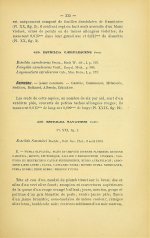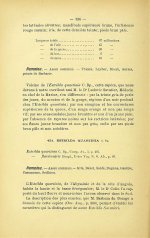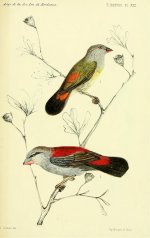Björn Bergenholtz
(former alias "Calalp")

Here´s some information on a little known collector (at least among ornithologists) and an even less known bird!
savatieri
● in the higly invalid "Estrilda Savatieri" ROCHEBRUNE 1883
This Ludovic Savatier collected various Naturalia (molluscs, insects, birds etc. etc.) for Rochebrune (i.e. for Muséum national d'histoire naturelle) in "Senegambia", during a short term, in the early 1880's, shortly before his retirement. However he is far more famous for his two expeditions to Japan, 1866–1870 and 1873–1876 (where he mostly collected plants, many new to science) and for his third expedition to South America 1876/7–1879.
The same Ludovic Savatier is also commemorated in, for example the Mantis Paroxyophthalmus savatieri ROCHEBRUNE 1883… and in several other (both valid and invalid) scientific names on other animals. And plants.
Not to be confused (which has been done) with the French botanist Paul Alexandre Savatier (1824–1886) [a k a "Alexander Savatier", in English texts], co-worker of Rochebrune.
*OD unseen by me, however the same Rochebrune [i.e. Alphonse Tremeau de Rochebrune] wrote the multi-volumed work Fauna de la Sénégambie (1883-1885), and the quote above is from the second volume Oiseaux (Birds) where he once again presented this bird and Mr. Savatier … on pp. 335-336 (here and attached).
Well, that´s him!
Björn
PS. Since this eponym seem to have been fairly short-lived I guess it turned out to be closer to today's (Estrilda) Coccopygia quartinia BONAPARTE 1850 than Rochebrune wanted!? Take a look and judge for yourself. At the Plate of the bird in question (also attached). It’s the top bird, No. 1. According to p. 457 (here) it´s a male.
X
savatieri
● in the higly invalid "Estrilda Savatieri" ROCHEBRUNE 1883
= the fairly well-known naturalist (primarily botanist), explorer and collector (mostly of plants) Dr. (Surgeon and marine medical officer) Ludovic Savatier (1830–1891) whose full name was Paul Amédée Ludovic Savatier, "officier de la Légion d'honneur", "médecin en chef de la marine" etc. etc."Voisine de l'Estrilda quartinia C. Bp., cette espèce, que nous devons à notre excellent ami M. le Dr. Ludovic Savatier, …" *
This Ludovic Savatier collected various Naturalia (molluscs, insects, birds etc. etc.) for Rochebrune (i.e. for Muséum national d'histoire naturelle) in "Senegambia", during a short term, in the early 1880's, shortly before his retirement. However he is far more famous for his two expeditions to Japan, 1866–1870 and 1873–1876 (where he mostly collected plants, many new to science) and for his third expedition to South America 1876/7–1879.
The same Ludovic Savatier is also commemorated in, for example the Mantis Paroxyophthalmus savatieri ROCHEBRUNE 1883… and in several other (both valid and invalid) scientific names on other animals. And plants.
Not to be confused (which has been done) with the French botanist Paul Alexandre Savatier (1824–1886) [a k a "Alexander Savatier", in English texts], co-worker of Rochebrune.
*OD unseen by me, however the same Rochebrune [i.e. Alphonse Tremeau de Rochebrune] wrote the multi-volumed work Fauna de la Sénégambie (1883-1885), and the quote above is from the second volume Oiseaux (Birds) where he once again presented this bird and Mr. Savatier … on pp. 335-336 (here and attached).
Well, that´s him!
Björn
PS. Since this eponym seem to have been fairly short-lived I guess it turned out to be closer to today's (Estrilda) Coccopygia quartinia BONAPARTE 1850 than Rochebrune wanted!? Take a look and judge for yourself. At the Plate of the bird in question (also attached). It’s the top bird, No. 1. According to p. 457 (here) it´s a male.
X
Attachments
Last edited:






